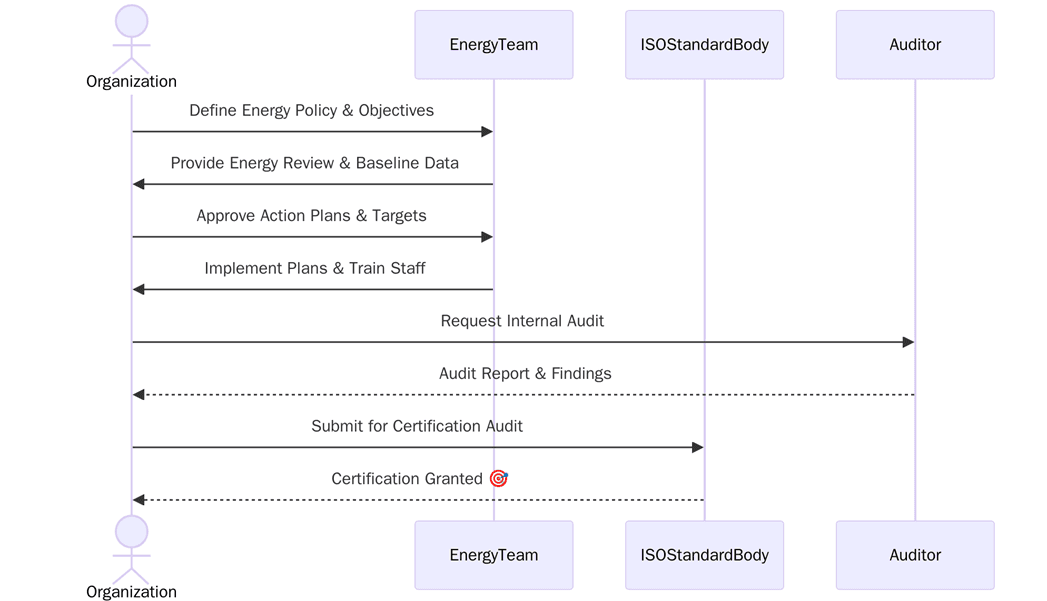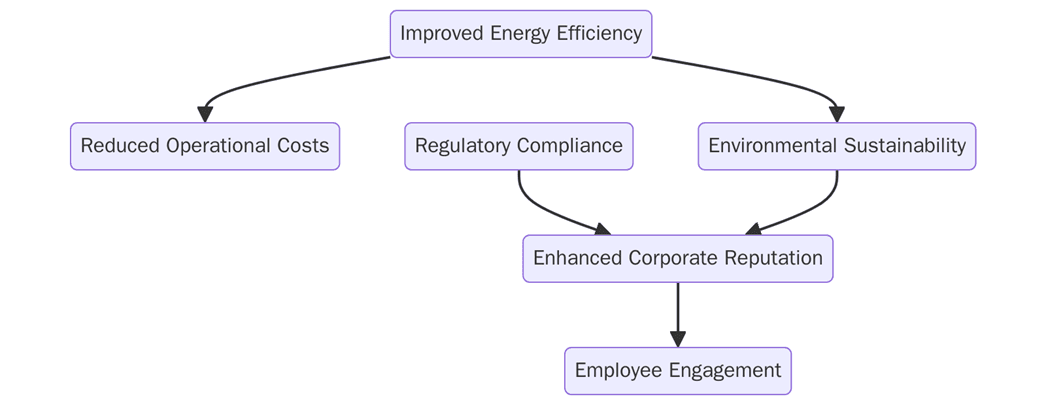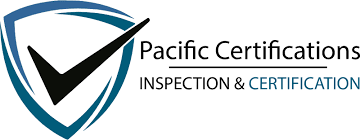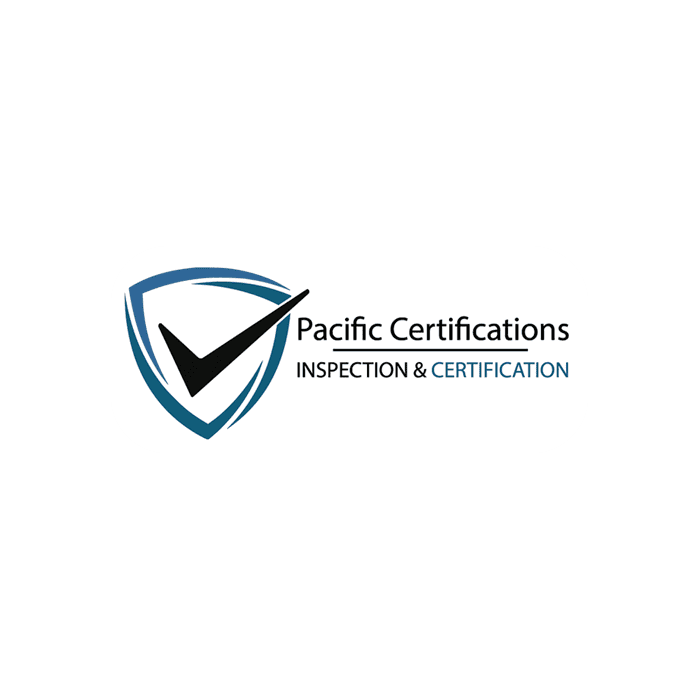Unexpected Advantages of ISO 50001 Certification for Energy Efficiency and Cost Savings

Rising energy costs and climate change concerns have placed energy management at the centre of business priorities. Organizations in manufacturing, healthcare, logistics and even IT are realizing that energy is no longer just an operational expense but a key performance driver. ISO 50001 certification, the international standard for energy management systems (EMS), is designed to help organizations establish processes for monitoring, managing and improving energy use. While many pursue certification for compliance or sustainability reporting, the standard also brings unexpected advantages, from financial savings and improved competitiveness to stronger investor confidence and reduced risk exposure.
Begin your ISO 50001 certification journey with Pacific Certifications and unlock cost savings while building a sustainable future.
Quick summary
ISO 50001 certification helps organizations manage energy systematically by tracking consumption, setting performance baselines and implementing controls that reduce waste. Beyond energy savings, certification provides a framework for better financial planning, reduced emissions, employee engagement and stronger credibility with investors and customers.
Why ISO 50001 certification matters for organizations?
Energy use accounts for a major portion of operating costs and unmanaged systems often result in waste, inefficiency and higher carbon emissions. According to the International Energy Agency (IEA), improved energy management could deliver 40% of the emission reductions needed by 2030 to meet global climate targets. ISO 50001 certification matters because it introduces a systematic approach: setting objectives, measuring results and verifying improvements. This transforms energy efficiency from a one-time initiative into a continuous improvement cycle, aligning financial savings with sustainability.
"Organizations that adopt ISO 50001 typically realize energy performance improvements of 10–20% within the first 18 months of certification." International Organization for Standardization (ISO)
Relevant ISO standards for energy and sustainability
Standard | Focus area | Application in organizations | Example evidence | Useful KPIs / SLAs |
Energy management systems | Reducing energy costs and carbon emissions | Energy baseline records, consumption logs | Energy savings %, carbon reduction % | |
Environmental management | Broader sustainability reporting and compliance | Environmental reports, audits | Waste reduction %, water usage % | |
Quality management | Integrating energy efficiency with process quality | SOPs, review minutes | Defect rate, process efficiency % | |
Occupational health & safety | Linking energy practices with worker safety | Incident logs, risk assessments | Incident reduction %, safety audit closure time | |
Greenhouse gas emissions | Measuring and reporting emissions | GHG inventories, verification reports | Scope 1 & 2 emission reductions |
What are the requirements for ISO 50001 certification?
To achieve ISO 50001 certification, organizations must establish a structured EMS that defines responsibilities, monitors performance and supports continual improvement. These requirements ensure that energy management is embedded across the organization, not treated as a siloed activity. Below are some of the key requirements:

- Define the scope and organizational boundaries for the EMS.
- Establish an energy policy with measurable objectives.
- Conduct energy reviews and identify significant energy uses.
- Document baseline data and performance indicators.
- Set KPIs for energy reduction and cost savings.
- Train staff and assign responsibilities for energy management.
- Implement operational controls and monitoring systems.
- Carry out internal audits and management reviews.
- Correct nonconformities and provide evidence of improvements.
Tip: Always integrate ISO 50001 with ISO 14001 or ISO 14064 if your organization also reports emissions. This reduces duplication and strengthens your sustainability reporting.
How to prepare for ISO 50001 certification?
Preparation involves aligning existing energy initiatives with the formal requirements of the standard. Institutions that prepare thoroughly can demonstrate real cost savings and environmental impact during audits.
- Conduct a gap analysis comparing current practices with ISO 50001 requirements.
- Collect data on energy consumption across facilities and operations.
- Train staff in energy monitoring and reduction techniques.
- Develop a clear energy policy and communication plan.
- Establish baselines and performance indicators.
- Test internal audits to ensure documentation and monitoring are ready.
- Engage leadership to monitor KPIs and allocate resources.
Certification audit
Stage 1 audit: Reviews the EMS scope, policies and baseline records.
Stage 2 audit: Evaluates implementation across facilities, equipment and processes.
Nonconformities: Must be corrected before certification is granted.
Management review: Confirms leadership commitment to energy reduction goals.
Final certification: Awarded once improvements are verified.
Surveillance audits: Conducted annually to confirm progress.
Recertification audits: Required every three years.
What are the benefits of ISO 50001 certification?
ISO 50001 certification creates measurable advantages for organizations that go far beyond compliance. It builds a culture of accountability while reducing costs and environmental impacts. Below are some of the key benefits:

- Lower energy costs through reduced consumption and waste.
- Improved competitiveness by aligning with buyer sustainability requirements.
- Reduced carbon emissions supporting ESG reporting.
- Increased staff engagement through energy awareness.
- Stronger reputation with regulators, investors and customers.
Market Trends
In recent years, ISO 50001 adoption is accelerating as investors and regulators prioritize ESG disclosures. Organizations are increasingly using digital twins and AI-powered energy monitoring to track real-time savings and link them to certification audits. Governments in the EU and Asia are offering tax incentives for ISO 50001-certified businesses, while large buyers in manufacturing and retail are making certification a supplier requirement. This shift positions ISO 50001 not just as an operational tool but as a strategic asset in global supply chains.
Research from the U.S. Department of Energy highlights that organizations implementing ISO 50001 can achieve 10–20% reductions in energy consumption within the first few years, translating into millions of dollars in cumulative savings across multiple facilities. Looking ahead, the International Energy Agency (IEA) estimates that widespread adoption of ISO 50001 could contribute to up to 50% of the energy efficiency improvements needed globally by 2030 to stay on track with climate goals (IEA, 2023). Similarly, initiatives supported by the Clean Energy Ministerial project that ISO 50001-certified facilities could collectively avoid over 100 million metric tons of CO₂ emissions by 2030, reinforcing the dual role of certification in cost reduction and environmental stewardship. These forecasts show that certification is not only about current savings but also a key driver for achieving long-term energy and climate targets.
How Pacific Certifications can help?
Pacific Certifications provides accredited ISO 50001 certification services for organizations across industries. Our independent audits verify energy savings, confirm compliance with global standards and strengthen your credibility in competitive markets.
Request your ISO audit plan and fee estimate, we will help you map Stage 1 and Stage 2 timelines and evidence requirements for your organization. Contact us at [email protected] or visit www.pacificcert.com.
Ready to get ISO 50001 certified?
Contact Pacific Certifications to begin your certification journey today!
Author: Alina Ansari
Suggested Certifications –
Read more: Pacific Blogs

